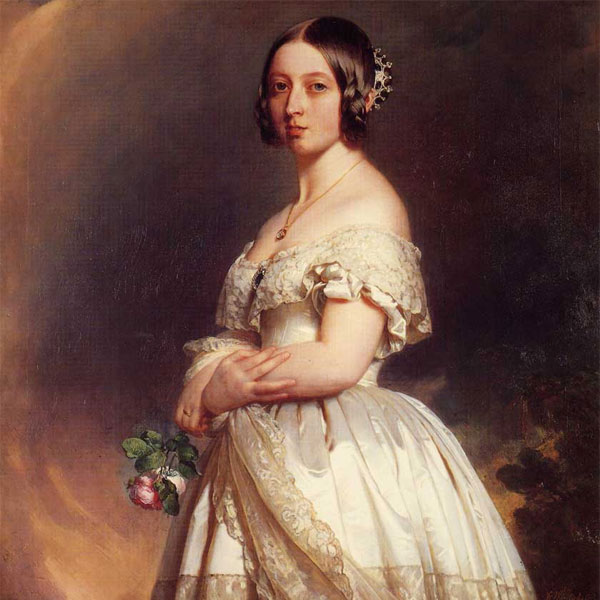Queen Victoria
(born 1819, reigned 1839 - 1901)

"Doctor Snow gave that blessed chloroform and the effect
was soothing, quieting, and delightful beyond measure."

"Doctor Snow gave that blessed chloroform and the effect
was soothing, quieting, and delightful beyond measure."
Queen Victoria and her consort Prince Albert first took an interest in chloroform in 1848. However, her physicians had grave reservations about the safety of obstetric anaesthesia. Victoria's seventh delivery, Arthur, Duke of Connaught (1850-1942), took place in 1850 without the aid of an anaesthetic.The man who made "the art of anaesthesia a science", Dr John Snow, administered chloroform for the birth of Prince Leopold in 1853 and later for the birth of Princess Beatrice in 1857.
"Her Majesty is a model patient", declared Dr Snow. He refused to disclose any more details despite many importunate inquiries from the Queen's loyal subjects.
John Snow was lucky: royal confinements were unnerving for even the bravest doctors, and certainly for a pioneering anaesthetist. Success or failure could change the course of history. Victoria herself had become Queen only through the tragic death of Princess Charlotte (1796-1817), George IV's one legitimate child and the heir to the British throne. In 1817, at the age of 21, Charlotte had gone into labour some two weeks after her baby was due. The princess was eventually delivered of a stillborn 9 lb. boy. Labour lasted over fifty hours; and Charlotte died the next day of post-partum complications. She was probably seriously anaemic: the princess had been bled several times during pregnancy in the approved manner (to "prevent haemorrhage or the child growing too large"). Her obstetrician, Sir Richard Croft (1762-1818), was criticised for being too scared to try the forceps during delivery, though its use might not have saved either the princess or her baby. Sir Richard shot himself early in the new year.
Fortunately, Queen Victoria and her doctors escaped a similar fate. The Queen was lightly chloroformed; Prince Leopold was born without incident. Snow emerged with his reputation enhanced. The Lancet deplored the use of this unnatural novelty for natural labour; but royal sanction helped make anaesthesia respectable in midwifery as well as surgery.